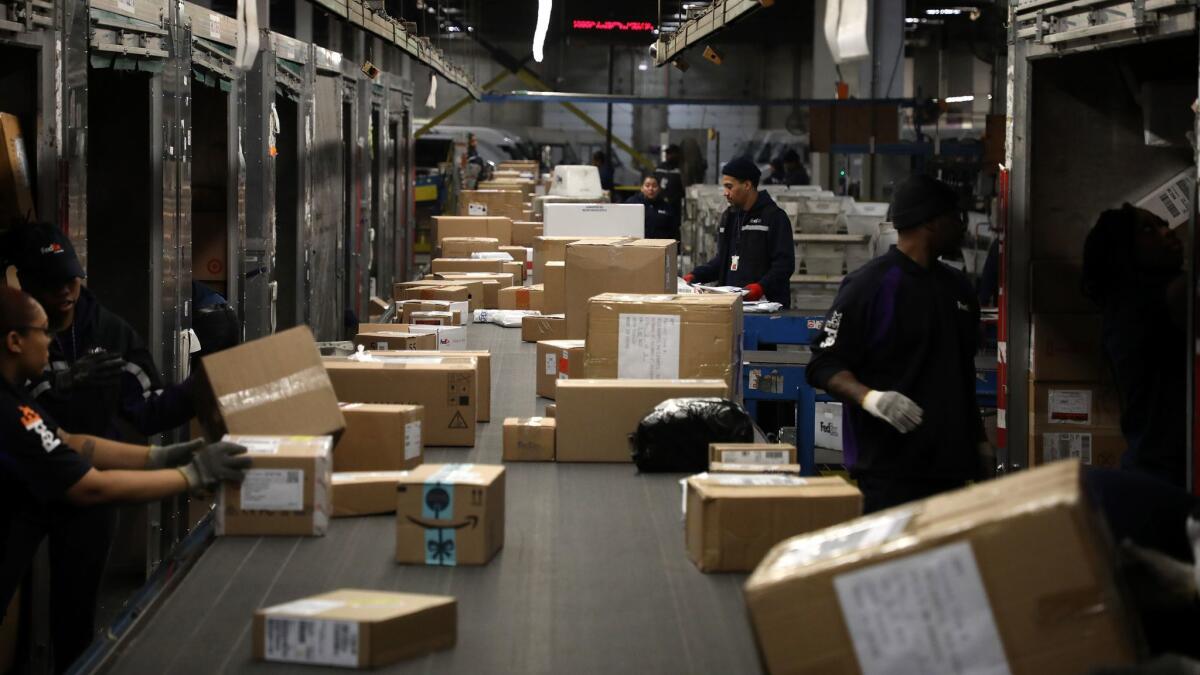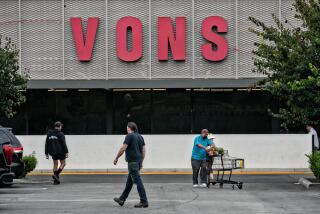Column: When shoppers return things, that’s a problem for retailers — with an interesting solution

- Share via
There are a number of problems that retail executives don’t much like discussing, but I’m hard-pressed to think of one they’re more tight-lipped about than their rate of merchandise returns.
Our post-holiday gifting hangover tends to be a peak time for returns, exacerbating a problem that’s grown more vexing for retailers with the rise of e-commerce: People often order a ton of stuff with the intention of keeping just one or two items, and retailers frequently foot the bill for the return shipping, crimping the profitability of the order. Apparel gifts, in particular, are often coming back through retailers’ doors at this time of year.
Return rates may not seem like they should be a particularly high priority for retailers, given everything else coming at them right now. Tariffs have been slapped on some imports, with higher levies potentially to come. Mall traffic is endangered. Competition from Amazon looms.
But tamping down on returns is intertwined with some of retail’s bigger problems and shouldn’t be overlooked. Consider, for example, the role that inventory management has played in recent years in sorting winners and losers in the clothing business. We’ve seen Gap struggle mightily to work through an issue related to the timing of orders at its namesake chain, while J.C. Penney’s margins have been pinched as it works to unload slow-moving merchandise.
Retailers can do small things to cut down on returns of online orders, such as providing better descriptions and photos of products. But this is a complex issue that was never going to be fully solved by such simple measures. If retailers could better predict how many e-commerce shipments might be coming back to their warehouses or physical stores, it would smooth their inventory management overall. And transportation costs have become burdensome these days, so if, say, an apparel chain can prevent having to pay for a return trip in a truck for a sweater, this surely helps them cope.
Against this backdrop, I chatted recently with Girish Rishi, the chief executive of JDA Software, and Uwe Weiss, the chief executive of Blue Yonder — a company recently acquired by JDA — about their efforts to use artificial intelligence and machine learning to tackle retail’s big returns challenge. They explained to me their idea of “return-conscious pricing,” and it’s a powerful example of how, like so many other aspects of retail, e-commerce is necessitating a different way of problem-solving and fresh thinking about shopper behavior.
Rishi and Weiss said that when pricing fashion items, retailers often simply ask themselves, “What price would make this item competitive in the marketplace?” But in an era when exploding return rates are weighing on profitability, they also should be asking, “What price would lower the return rate for this item?”
Blue Yonder is finding that lowering prices tends to lower return rates. There’s some intuitive logic to this, even if it doesn’t seem to make for good business sense at first blush. If a blouse costs $40 or $45, and it’s not a perfect fit or exactly to your taste, you’re going to want your money back. But maybe at $32, returning it isn’t worth the hassle.
“It’s not very rational for retailers to lower their price,” Weiss said. “But if you lower the price, you get into a different price category or cluster. And getting into the cluster means you reduce the likelihood of a return, which gives you greater profitability.”
Blue Yonder is taking into account all sorts of things to try to help retailers with the returns conundrum. For instance, it has found that basket size has a correlation to return rate (the bigger the basket, the greater the likelihood of returns), and it is modeling factors such as how frequently someone makes a purchase and whether the item is something other people see (i.e., shoppers are more finicky about the fit of a cocktail dress than the fit of pajamas). It shouldn’t be particularly surprising that these attributes offer insights about return propensity, but technology is making it possible for retailers to digest that information in a more methodical way and do something about it, tailored for different categories and geographic markets.
Optoro, a company that helps retailers manage returns, estimates that some $94 billion worth of merchandise will be sent back during the holiday season. By using their own data more wisely, store owners and chains can help ensure next year’s batch of rejects isn’t quite as much of a deluge.
Halzack is a Bloomberg Opinion columnist covering the consumer and retail industries.
More to Read
Inside the business of entertainment
The Wide Shot brings you news, analysis and insights on everything from streaming wars to production — and what it all means for the future.
You may occasionally receive promotional content from the Los Angeles Times.










